Kia Sportage Review
Kia Sportage Review
Kia’s popular crossover ramps up the style

Verdict
Pros
- Bold new look pushes Kia’s new sense of style
- Value for money from engineering to equipment count
- Punchy new 1.6 petrol engine and dual-clutch automatic gearbox
- Improved space and practicality
Cons
- Entry-level versions can feel cheap
- Visibility
- Not the best for MPG or CO2 emissions
Key Specifications
- Review Price: £18,795
- 5 seats
- Wireless phone charging, ‘smart’ boot opening, Kia Connected services via TomTom, Smart Parking Assistance System
- L4480mm x W1855mm x H1645mm (inc. roof rails)
What is the Kia Sportage?
Now in its fourth generation, the Kia Sportage really came of age with the 2010 version designed and built in Europe. Launched just as the market went crazy for crossovers, this was the perfect vehicle to drive Kia’s image upmarket from its ‘value brand’ origins. This latest version launched in 2016 with an even more assertive look and an increased range of engines.
Like most crossovers, the Sportage is intended as a do-it-all family car combining 4×4 stature with hatchback running costs. There are four-wheel-drive versions if you need all-weather ability, but the front-wheel-drive models are perfectly satisfactory for most drivers.
A medium-sized, five-seater crossover, the Sportage goes up against the genre-defining Nissan Qashqai and the many rivals that followed it into the market. Kia has benefited from being one of the earlier crossovers on the scene and the previous Sportage captured the mood perfectly.
Related: How to buy a used car
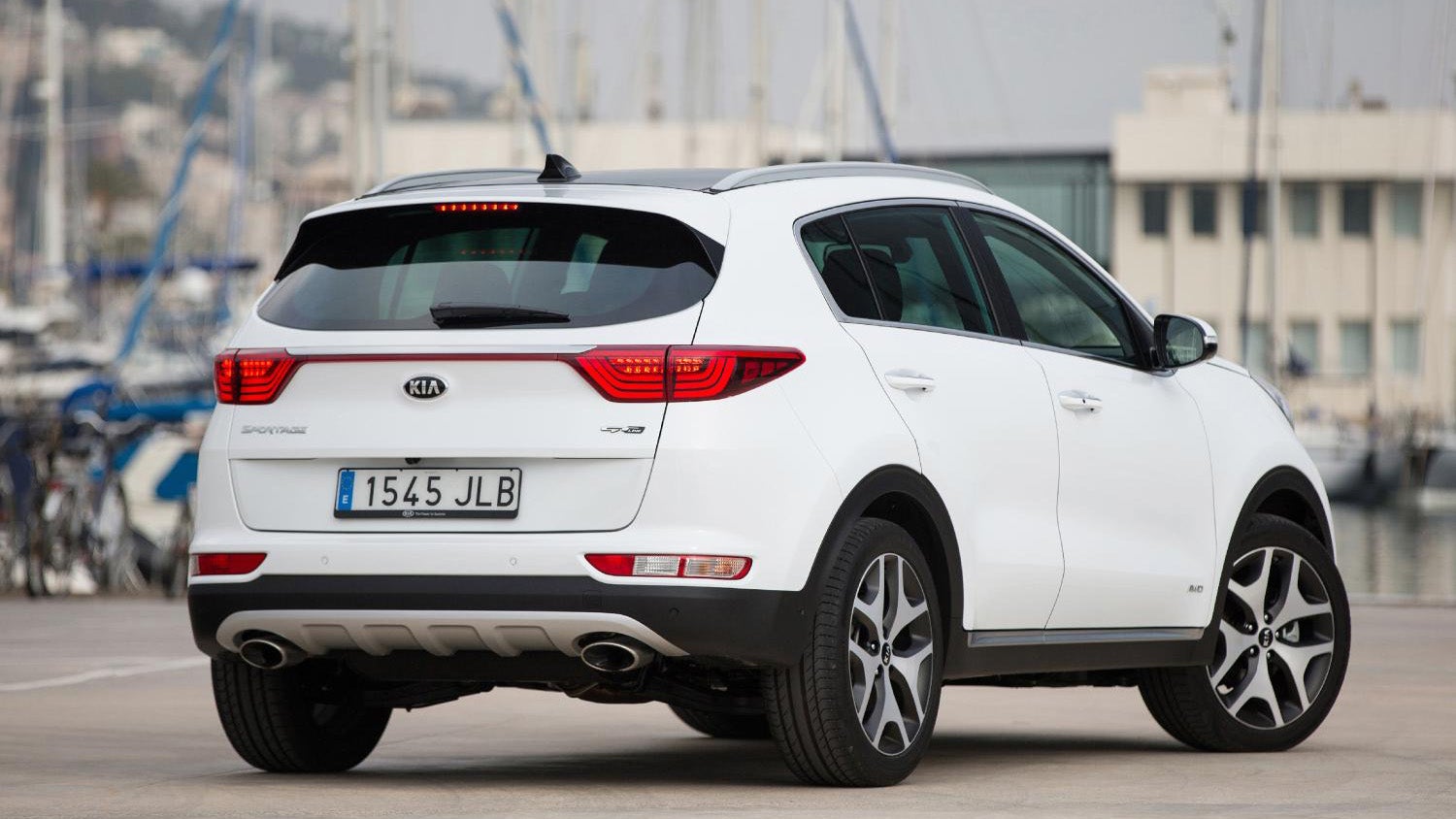
Kia Sportage – Models
Engine-wise there are two petrol options and two diesels available. Petrols comprise the 130ps 1.6 GDI and turbocharged 1.6 T-GDI with a healthy 174ps. Of the diesels the 114ps 1.7-litre CRDI is the most popular (139ps with the seven-speed automatic) while the 2.0-litre delivers 134ps or, for higher-spec models, 182ps.
Trim levels are fairly easy to understand and take in seven main steps, starting with the 1, 2, 3, 4 and 5. Those prefixed ‘KX’ feature the 2.0-litre CRDI diesel engine. Above that you can have GT-Line or GT-Line S, these all featuring all-wheel drive and the more powerful of the engine options, plus their own distinctive styling features.
The 1 is the entry level but already well equipped with cruise control, Bluetooth phone and audio, DAB radio, 16-inch alloy wheels and air conditioning. The 2 and KX-2 add a 7.0-inch touchscreen navigation system, reversing camera, parking sensors and lane-keeping assistance, while 3 and KX-3 add leather upholstery, a panoramic sunroof, heated seats front and back and a fancier 8.0-inch infotainment system with JBL speakers. The 4 and KX-4 get Bi-Xenon headlights, LED rear lights, chrome exterior trim, power-adjustable seats and more driver assistance systems as standard, while KX-5 throws in the Smart Power Tailgate and automated Smart Parking Assistance System.
The GT-Line is based on the 2 and KX-2 but adds a GT-Line styling pack inside and out, 19-inch wheels and Smart Entry System. GT-Line S gets all the toys, including the Bi-Xenon lights, power seats, a panoramic sunroof, JBL sound system and a heated steering wheel. GT-Line cars are the only models offered with the 1.6 T-GDI petrol engine.
The 1.7 CRDI diesels in £24,245 ‘2’ trim or £26,945 ‘3’ (two-wheel drive in the former, all-wheel drive in the latter) would represent the core of the range, the more powerful versions with the seven-speed dual-clutch gearbox especially attractive. Meanwhile the KX-5 the best equipped and most expensive and the GT-Line cars the most sporty in appearance and character.
Related: Best sat-navs
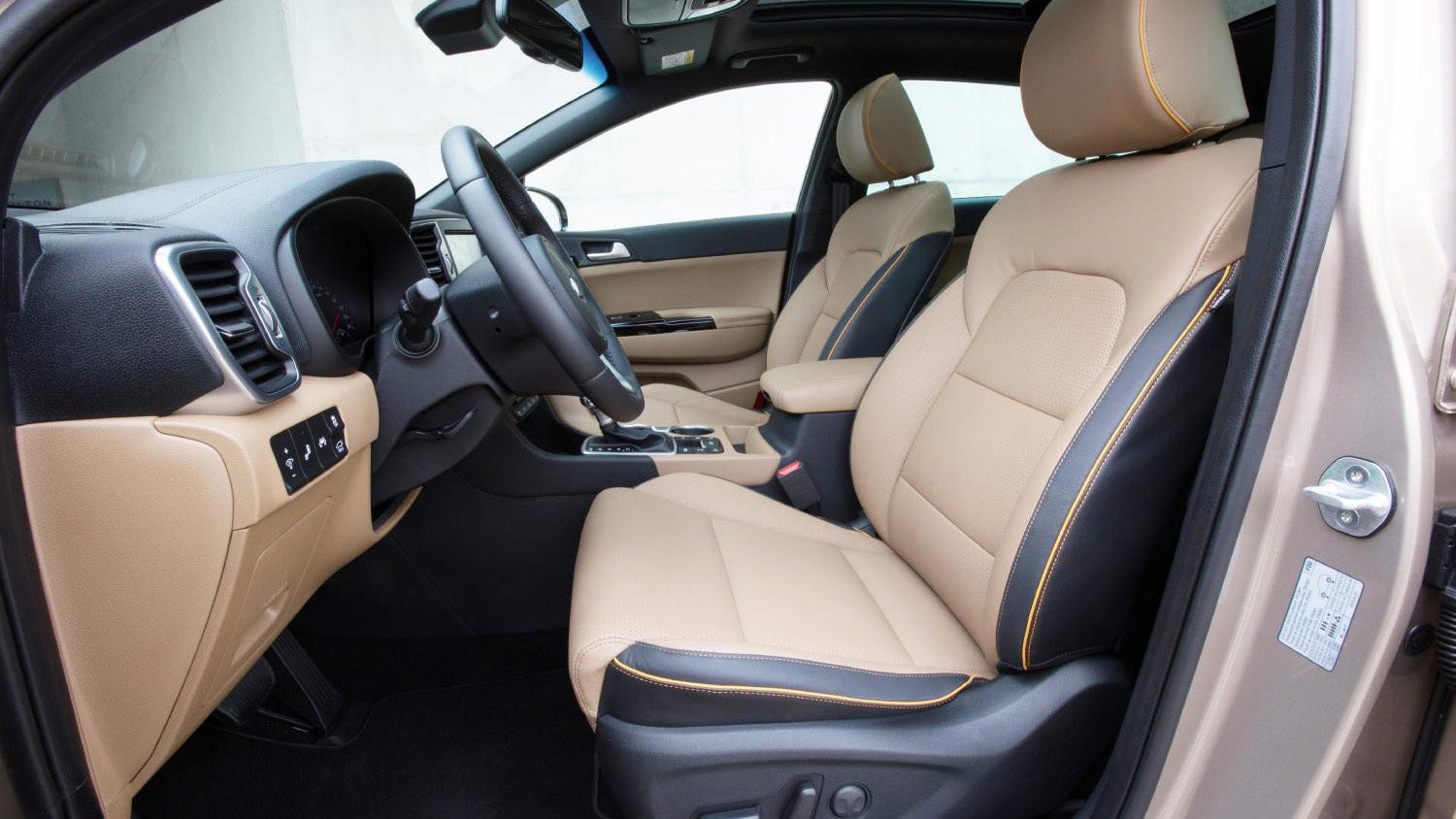
Kia Sportage – Interior and styling
Where the previous Sportage had a more rakish interior design, Kia has decided to give this current one a more upright feel, divided horizontally into what it calls ‘display’ and ‘control’ zones. It’s a logical layout placing the touchscreen within easy reach, but the dash feels tall and slab-like, and there are a lot of plain, untextured surfaces. Indeed, for all the style of the exterior, you may find the interior something of a let-down, especially in the lower trim levels.
Same goes for the material quality, the shiny dash plastics on even the big-selling 2/KX-2 grade a little disappointing. A perhaps superficial observation but others – like the recently upgraded Qashqai – have been working hard on introducing a more premium feel.
Things improve from 3/KX-3 and on GT-Line models with their upgraded dash trim and leather upholstery and there’s nothing wrong with the ease of use or functionality. Kia has worked hard on interior space for this latest Sportage, especially in the rear. The floor is lower and the seat base higher, improving the seating position and view for rear-seat passengers. Heated rear seats from 3/KX-3 grade up are neat too.
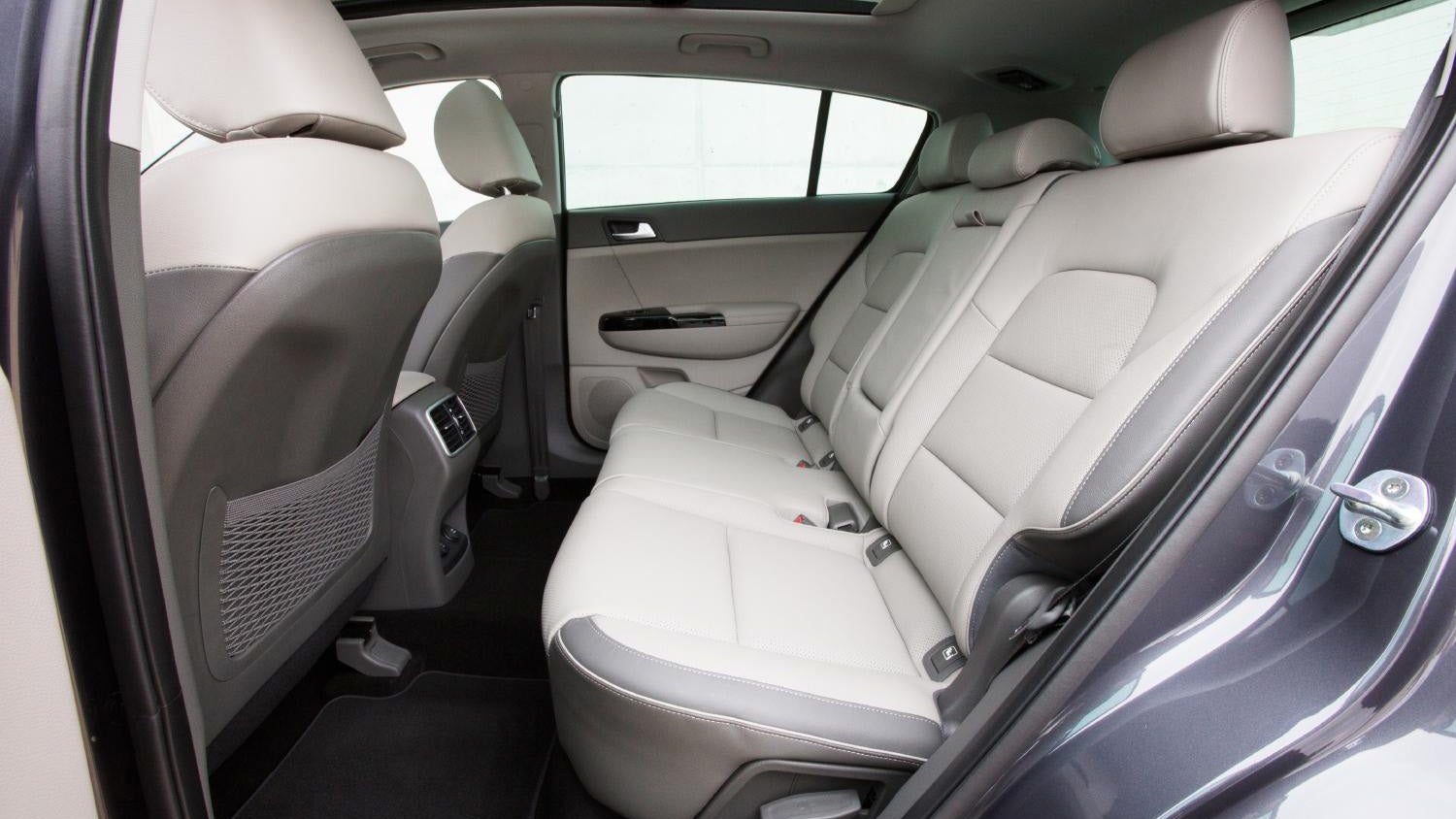
Safety kit is impressive, all Sportages getting twin front airbags (with deactivation possible for the passenger side if you’re using a child seat), side airbags, curtain airbags, ISOFIX with top tether mounts and three-point belts for all five seats. Stability control and Trailer Stability Assist are also standard, driver aids like Lane Keep Assist (2/KX-2 and up) added as you progress through the range. If this is important you’ll really need to be looking at 4/KX-4 grade and above, Autonomous Emergency Braking, Blind Spot Detection and Rear Cross Traffic Alert standard from here on in. Curiously these latter functions aren’t available on GT-Line cars.
Kia Sportage – Boot size
Wheelarch intrusion into the boot space is a common issue with crossovers. The Sportage suffers from this to an extent, though the boot is deep and tall and holds 491 litres with the seats up. The basic 1.6 GDi versions in 1 and 2 grade use a Tyre Mobility Kit rather than the space saver spare of others, freeing up a bit more space. With the seats folded you get 1480 litres of space.
The space is competitive, actually beating the Qashqai’s standard 430 litres and the Renault Kadjar’s 472 litres. Two-wheel drive SEAT Atecas are a little better at 510 litres (485 litres on four-wheel-drive models) while the Hyundai Tucson offers a similar compromise at 513 litres for two-wheel-drive models and 488 litres for four-wheel-drive versions. These figures are all according to the VDA measurements provided by manufacturers, the Sportage seemingly representative of the cars it’s up against, although some cars use the space better than others.
KX-5 and GT-Line S models get a Smart Power Tailgate, this automatically opening the boot when the key is within range and letting you load the car even when your hands are full. And if this still isn’t enough and you need additional carrying capacity for the family holiday, roof rails are standard on all cars bar the entry-level 1 grade.
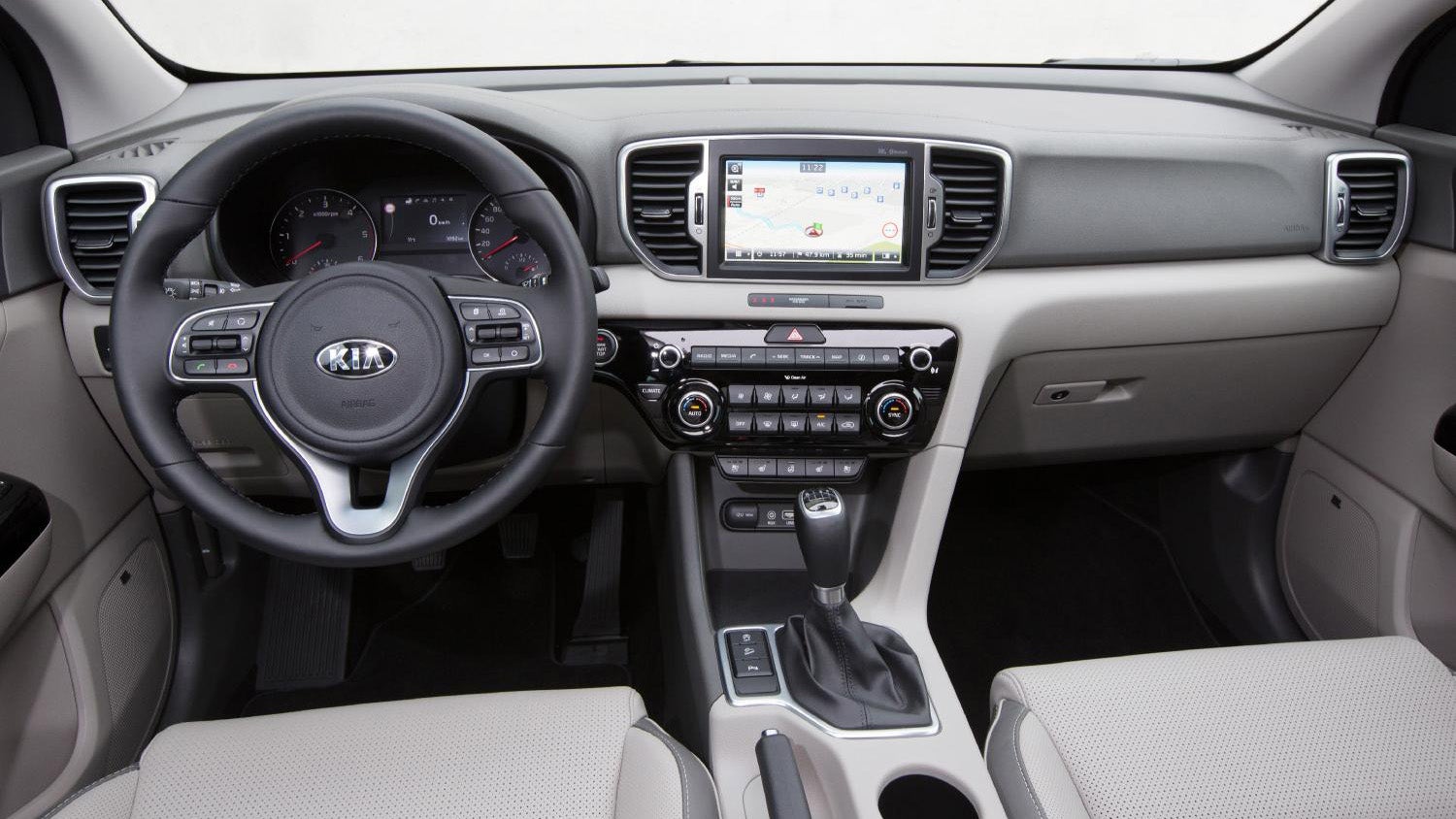
Kia Sportage – Sat-nav and infotainment
DAB radio, a trip computer, Bluetooth and USB/aux-in ports are standard across all Sportages. From 2/KX-2 up you get a standard touchscreen navigation unit with a 7-inch screen, European mapping and TMC traffic warnings. It’s not the fanciest interface going, but it’s got all the basic functions you’ll need.
If you want a bit more you’ll need 3/KX-3, gaining the fancier 8-inch screen and an additional 4.2-inch ‘Supervision Cluster’ in the instrument binnacle for turn-by-turn directions and other info. This system also includes Kia Connected Services, which uses TomTom data to keep you up to speed with traffic, speed cameras, local information and weather updates, though you’ll have to stream the data from your smartphone to do so. Music lovers will also appreciate the eight-speaker JBL sound system (complete with subwoofer), which is also standard from 3/KX-3 upwards.
Kia’s policy of ‘fixing’ the specification to each trim grade means you’ll have to upgrade to 3/KX-3 if this is important to you, because you can’t option these features onto lower trim levels. To put that into context the ‘price walk’ from a comparable 1.7 CRDI manual would be £22,745 in 2 to £25,445 for the same car in 3 grade.

Kia Sportage – Driving performance
Kia has made a deliberate decision to put the sport into Sportage and has perhaps tuned the car more for drivers than it has passengers. This isn’t necessarily a criticism, because if you value a more responsive feel you’ll appreciate the way the Sportage goes.
Kia has also invested in the hardware to make the car handle comfortably and securely. Multi-link rear suspension may sound complex (and it is!) but is standard across the Sportage range. Rivals – Qashqai and Kadjar included – ‘hide’ the fact that some cheaper models use more basic suspension. This is one example of Kia putting customer benefit against bottom-line penny pinching. The calibration and response of the throttle, brake, clutch and gearshift are all very crisp too, making it more responsive to drive than others in the class.
And although it’s no sports car features like this and the firmly weighted, direct steering will appeal to those who enjoy their driving. The flipside to this is, of course, that it feels a little less plush and comfortable than some rivals. Choose your priorities accordingly, the fact the range jumps from more comfortable 17-inch wheels to more aggressive 19-inch ones when you go from 2/KX-2 to 3/KX-3 and up signalling where Kia is positioning the Sportage. Nissan, meanwhile, offers customers the chance to ‘downgrade’ to 18-inch wheels if they prefer chunkier tyres, but on the Kia it’s 19s or nothing on the fancier cars.
Engine-wise the 1.7 CRDi diesel is businesslike but gets the job done. Paired with the seven-speed dual-clutch automatic it gets a power increase over the manual from 114ps to 139ps too. The 2.0-litre CRDi diesel is a powerful motor, at least in its 182ps form – for some reason it’s detuned to 134ps in the GT-Line. In the higher trim it gives the Sportage an answer to the 190ps 2.0 diesel fitted to higher-range VW Tiguans and SEAT Atecas, the automatic option a six-speed unit.
The most interesting engine, however, is the 174ps 1.6 T-GDI petrol. Restricted to GT-Line and GT-Line S only this turbocharged motor is a perfect pairing with the optional seven-speed dual-clutch automatic, offering a sporty feel. If all-wheel drive matters, all Sportages from KX-2 upwards (except the 4 and KX-4) are so equipped.

Kia Sportage – MPG
The Sportage’s engine range tends to larger capacity motors compared with many of the downsized rivals and fuel-saving features like Intelligent Stop and Go (ISG) are restricted to the 1.7 CRDi diesel and 2-grade 1.6 GDi only.
As such the basic 1.6 petrol records official figures of 156g/km (147g/km with ISG) and 42.6mpg (44.8mpg with ISG) against the 126g/km and 50.4mpg of the equivalently powerful 1.2 TCe engine used by the Renault Kadjar. The Nissan Qashqai also uses a version of this engine while the VW Tiguan and SEAT Ateca have the option of a more powerful 1.4-litre turbo with 137g/km and 47.1mpg. If nothing else this illustrates the benefits of these more modern, ‘downsized’ turbo engines.
It’s a pattern repeated as you go up through the diesel motors too. The 114ps 1.7 CRDi records 119g/km and 61.4mpg for the manual and 129g/km and 57.6mpg for the more powerful 139ps automatic. But the 110ps 1.5 diesel shared by the Kadjar and Qashqai can achieve 99g/km and 74.3mpg with the SEAT Ateca’s 1.6 TDI sitting between.
Official test figures and what you get at the pumps don’t always tally, but these numbers can have a significant bearing on tax and other running costs, the Kia lagging against rivals by a number of important benchmarks.
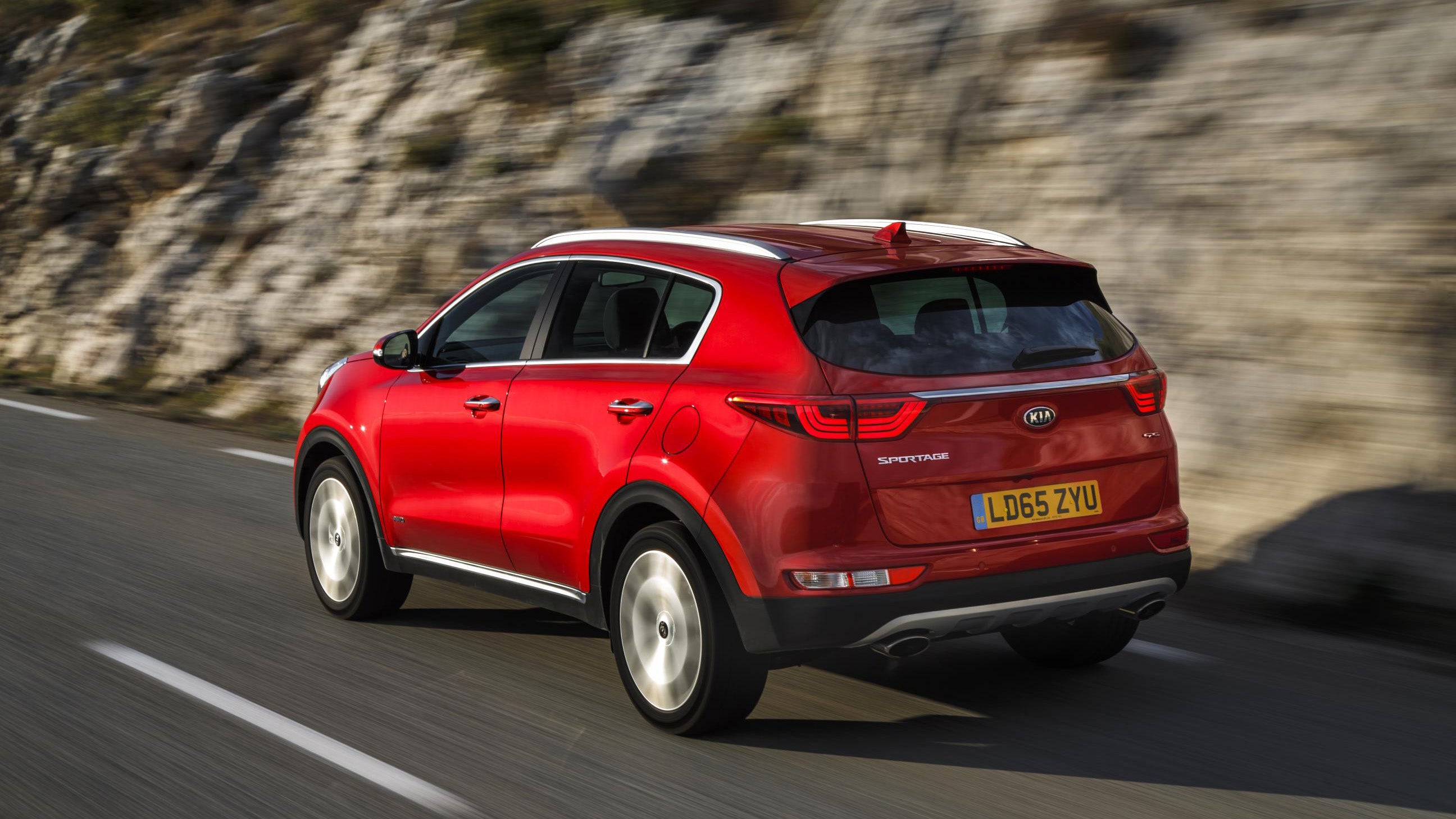
Should I buy the Kia Sportage?
Kia has long traded on its value-for-money reputation, underpinned by that very attractive and transferrable (subject to correct servicing) seven-year/100,000-mile manufacturer’s warranty. This, combined with the stylish looks, have attracted many to the brand and the Sportage is deserving of its popularity.
Standard equipment levels are generous too, the sweet-spot of the range for many likely to be the 1.7 CRDi in 3 trim. This gets the bigger wheels, the better infotainment system, leather, rear parking sensors and costs £25,445 for the all-wheel-drive manual version. The core Nissan Qashqai model – the 1.5 dCi N-Connecta – costs £26,805, is two-wheel drive and only has 18-inch wheels and cloth seats. Bear in mind you can get a SEAT Ateca 1.6 TDI SE Technology for £24,330, this price including navigation as standard.
The pattern emerging here is that the Sportage offers good, but not outstanding, value and has decent performance from its various engines, although nothing that marks it out as exceptional. It’s a sportier car to drive than many rivals, and that will be attractive to a certain type of buyer, but after a strong start for Kia in the crossover sector it’s impossible to ignore the fact that the competition it faces puts it under greater scrutiny than before.
Related: Best dash cams
Verdict
Great-looking and good to drive, the Sportage also packs in a lot of kit for the price. It’s pushed hard by rivals, though, and is left exposed in some areas, not least official MPG and emissions figures.

